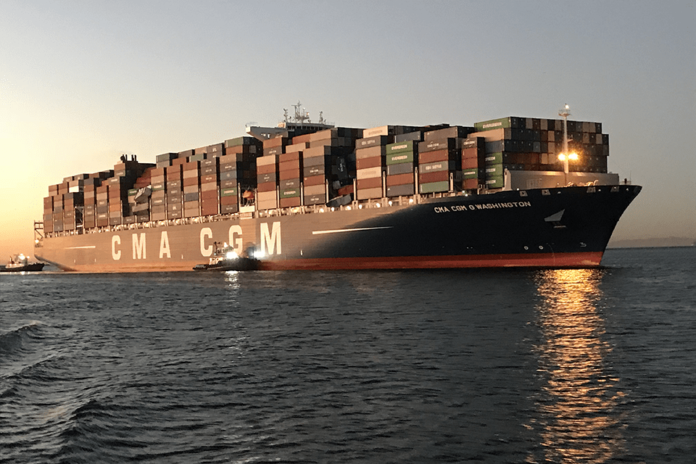Parametric rolling, and lashing errors were the cause of the three stack failures on the CMA CGM G. Washington, resulting the loss of 137 containers and damaging a further 85 boxes, according the Marine Accident Investigation report (MAIB) released this week.
According to the MAIB accident analysis, the vessel first rolled 20° to starboard, paused for several seconds then rolled 20° to port, during the early hours of 20 January 2018, in heavy seas in the Pacific Ocean.
MAIB investigators concluded that the stack collapses almost certainly happened during the parametric rolling, which caused extreme pressure on the container lashings.
“The risk of parametric rolling was not identified by the master or his bridge team because they were unaware of the full capabilities of the decision support tool, and therefore were unaware of its predictions,” said the report.
However, the report also concluded that the reduced structural strength of non-standard 53ft containers in bay 54, inaccurate container weight declarations, mis-stowed containers and loose lashings.
Acceleration forces and the bayplans conducted by Bureau Veritas calculated that the acceleration forces acting on the containers in bays 54 and 58 were within the limits for ISO containers, but exceeded those for the non-standard 53ft container.
The investigators concluded that, “The corner post load limit for 16 of the 17 rows in Bay 54 was exceeded, and the racking force limit was exceeded in four rows. It was therefore unsurprising, during the initiating roll on 20 January 2018, that most of the non-standard 53ft containers suffered structural failure, causing the remainder of the bay to collapse.”
The collapse of the non-standard containers in bay 54 led to the stack failure in the adjacent bay 58, as falling containers caused a ‘domino effect’ knocking more boxes from their moorings as they fell.
Some 24 containers were lost overboard, and a further 17 boxes were damaged as the stack failed, but the report also highlighted the failure of the twistlocks in the bay as the safe working loads (SWL) of the fixtures were exceeded. A phenomenon that also featured in the analysis of the failure of bay 18.
The investigation determined that several twistlocks were recovered and investigators found that the SWL on the twistlocks had been exceeded, but that the loads on the fixtures were less than the manufacturer’s design proof and breaking loads.
Although the investigation into the collapse of bay 18 was inconclusive, the report said that there were a number of contributory factors into the stack failure, including misdeclared container weights, weight distribution, the lashing arrangements and the condition of some of the containers.
The structure of some of the containers was poor and this lead to a collapse of the load, as the containers collapsed they moved sideways, into the next stack pushing each column of containers outwards until the outer column was pushed over the side.
In conclusion the MAIB reported, “Given the reliance placed by the ship’s crew on the ship’s loading computer when judging whether a container stow is safe, it is essential that input data for container strength accurately reflects the CSC [Convention for Safe Containers] data for each container loaded, particularly non-ISO containers.”
Furthermore, the report said that cargo planners could not access CSC information on individual container types through the Bureau International des Containers, Global Container and Approved Continuous Examination Programme databases, what is more these databases are not fully populated as some countries have not supplied data.
“The UK is one of the countries that has yet to contribute to this database,” said the report.
Moreover, the final cargo plan was not updated to reflect the container weights measured in the terminal, in accordance with guidance from the International Maritime Organization, the Maritime and Coastguard Agency and World Shipping Council.
Nick Savvides







